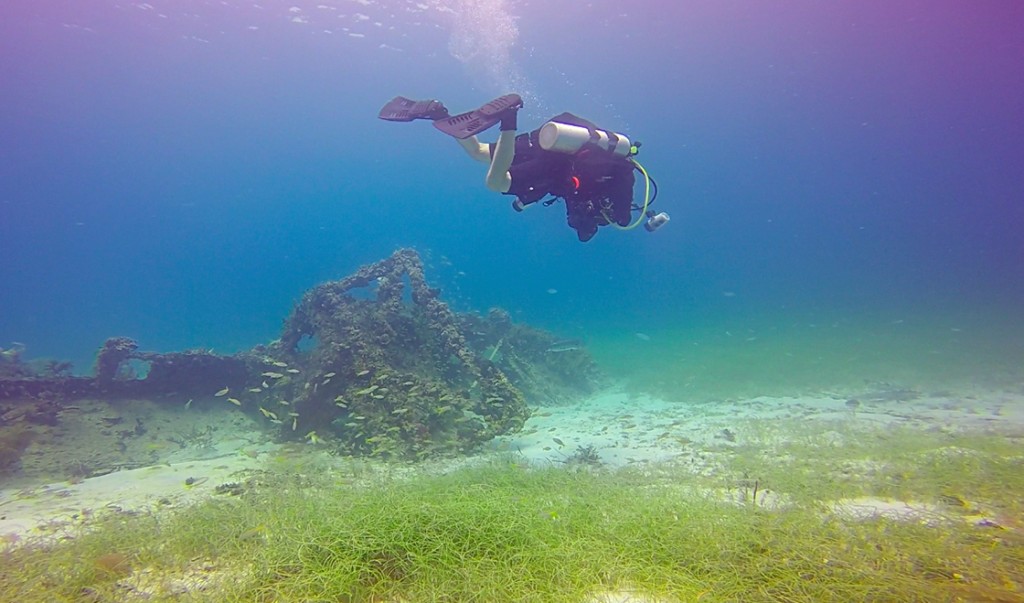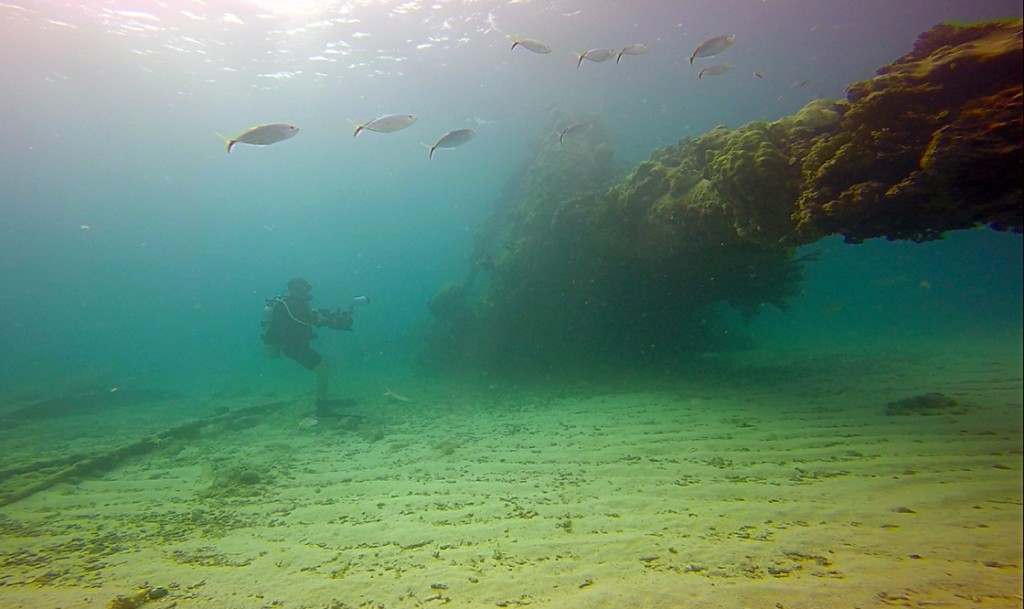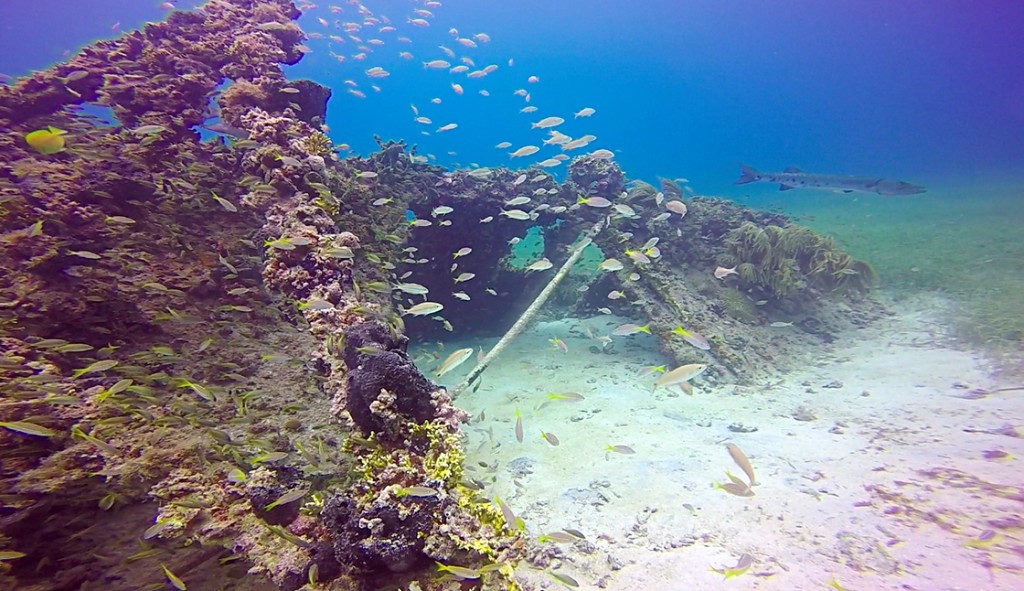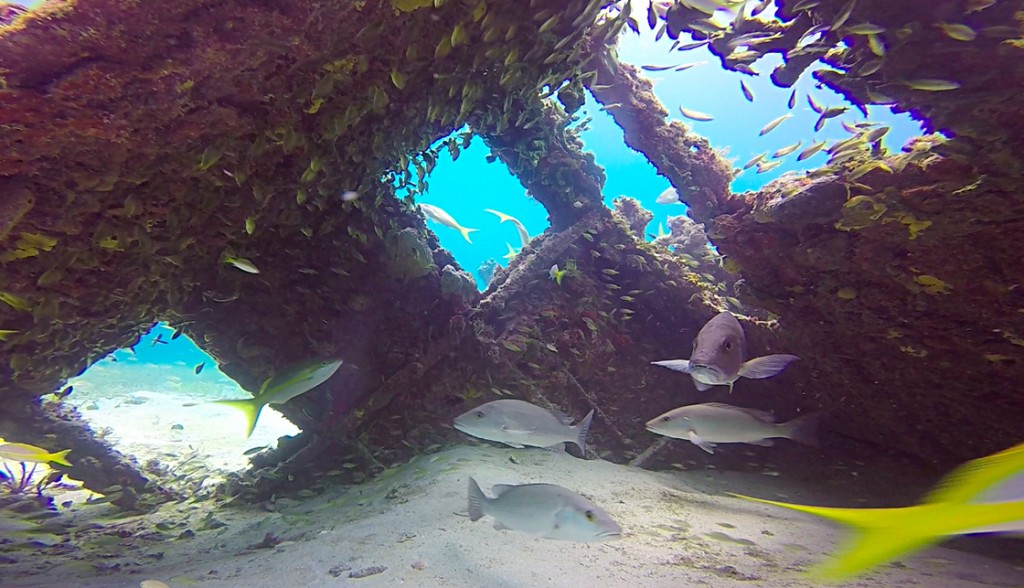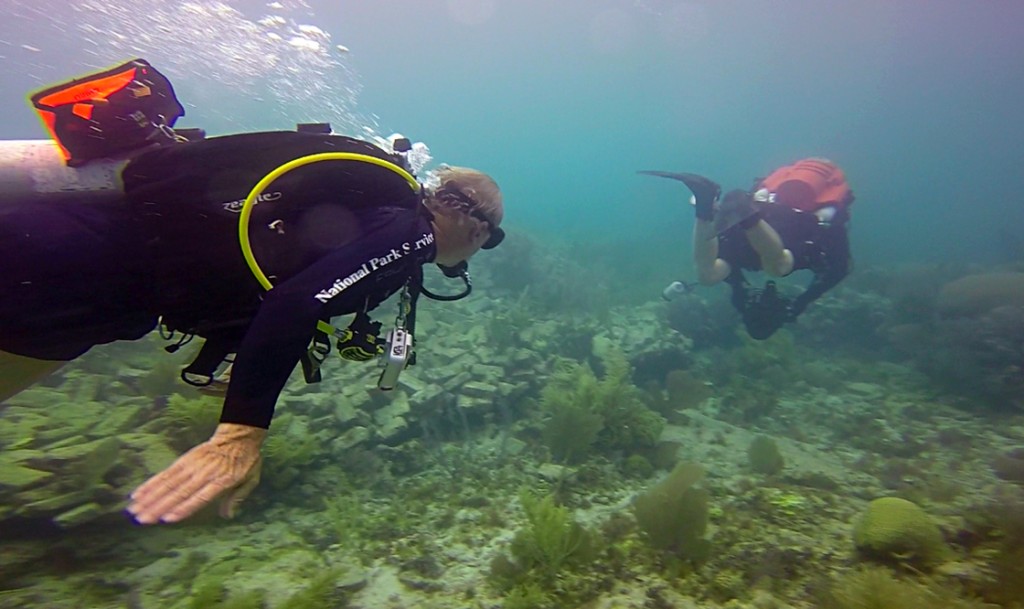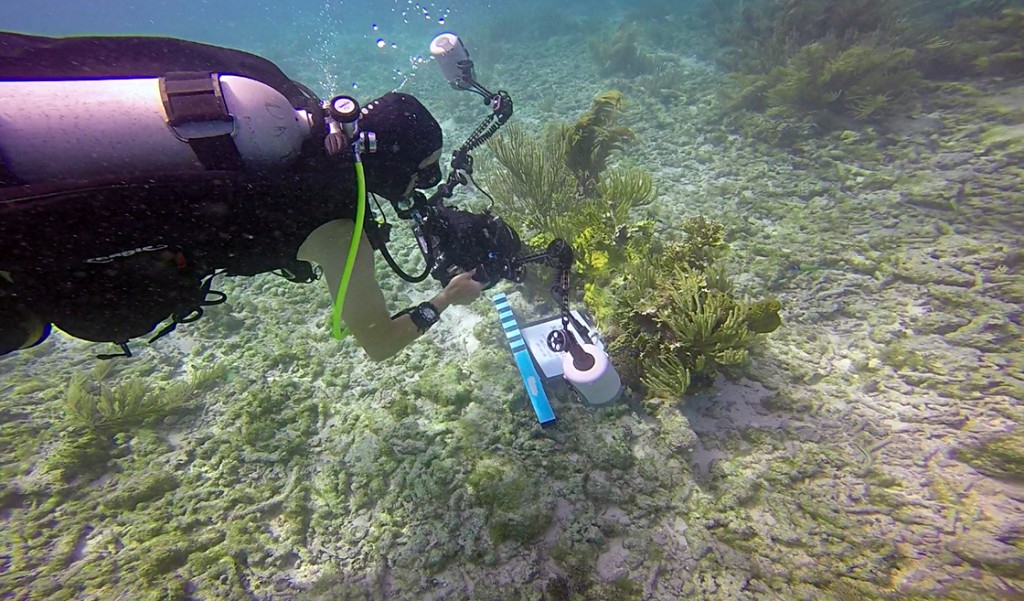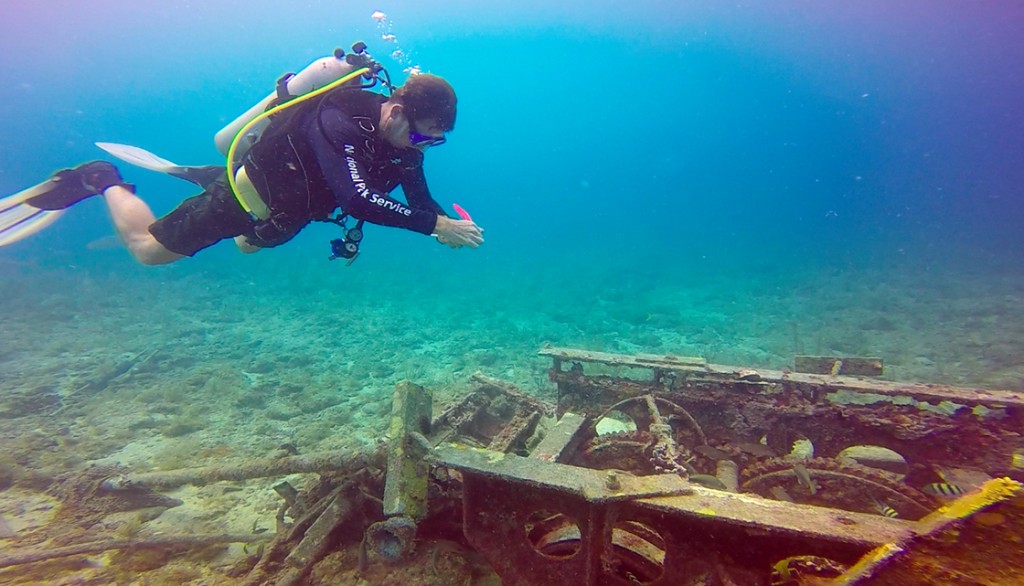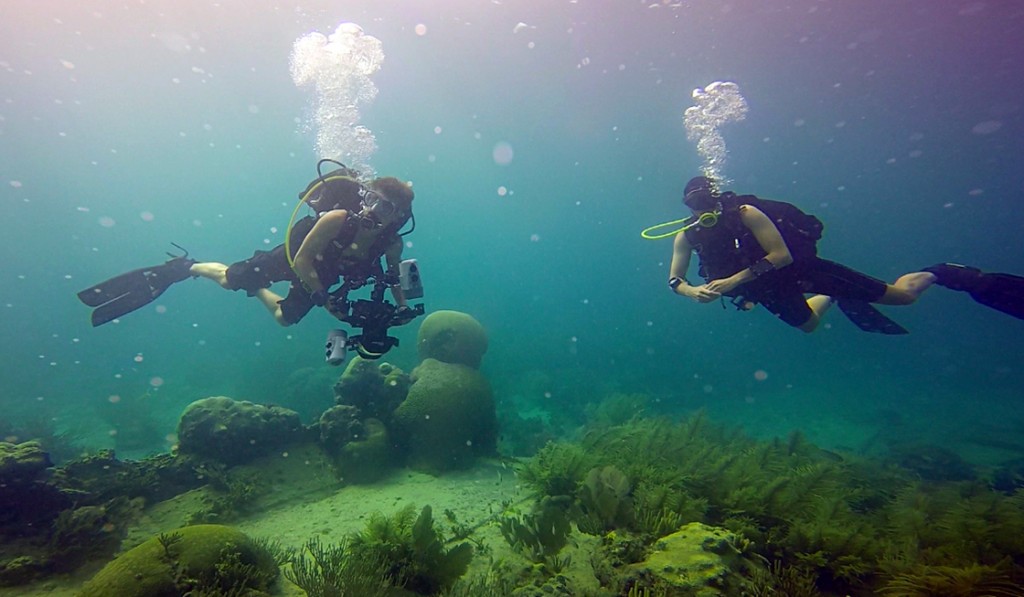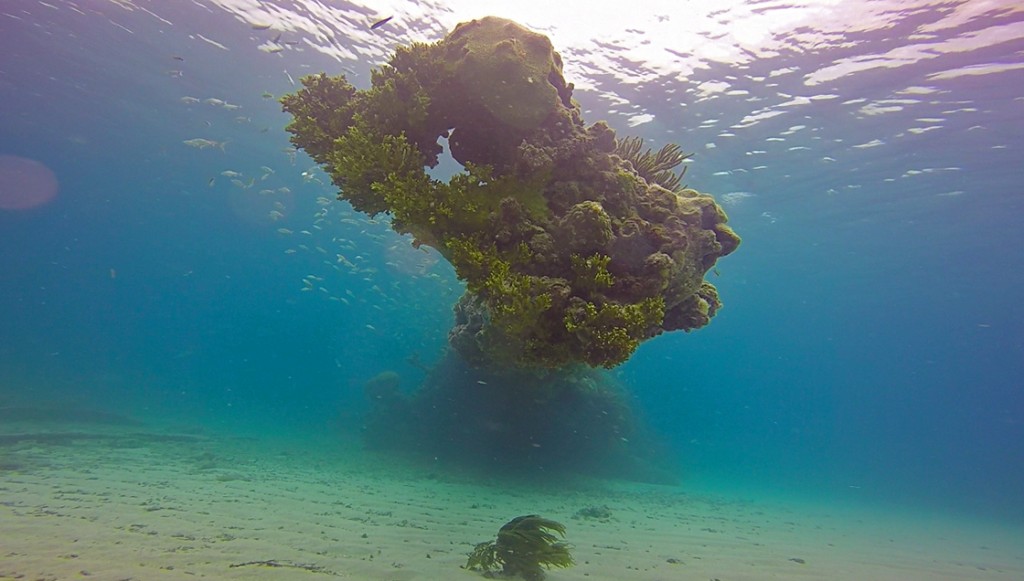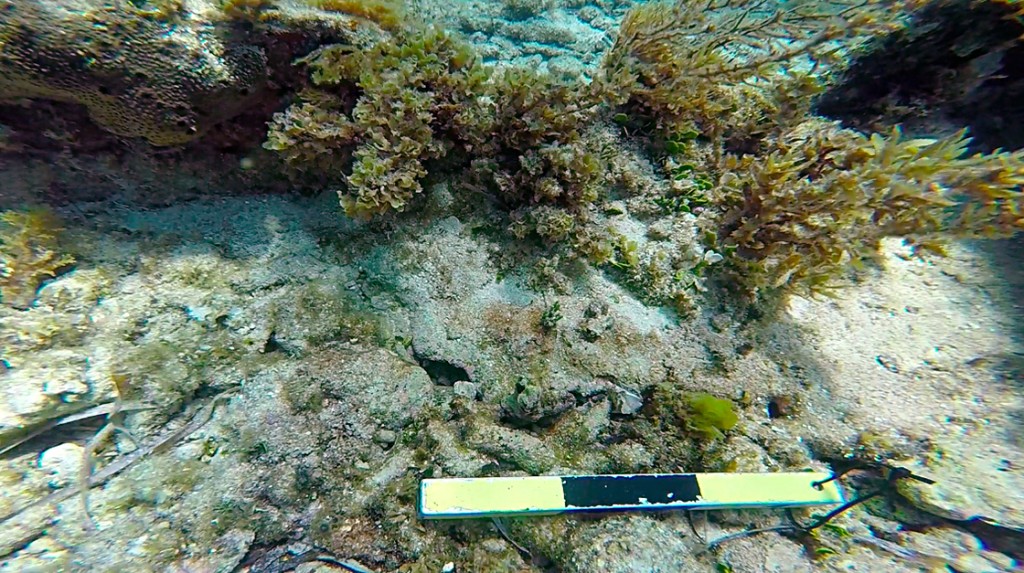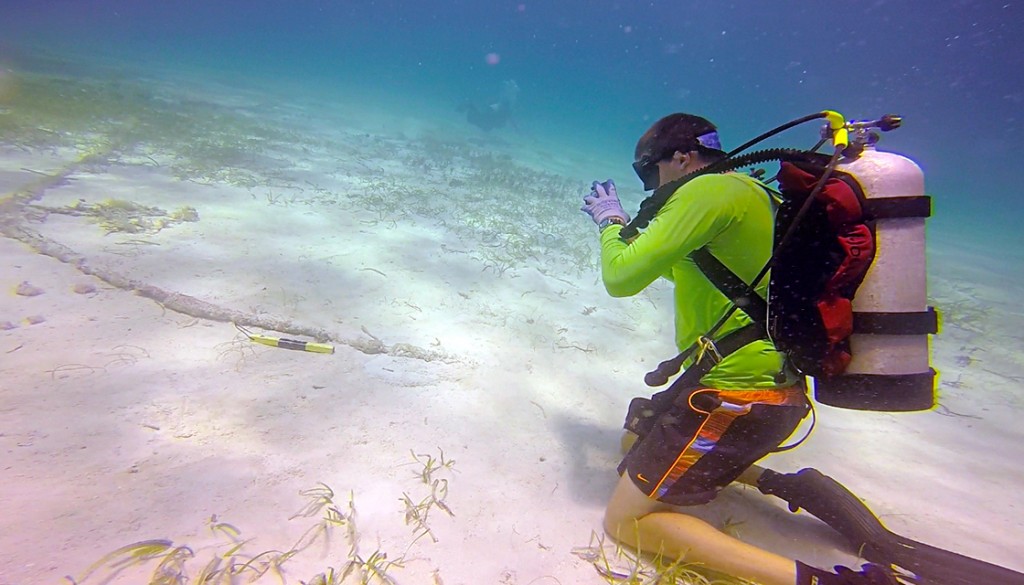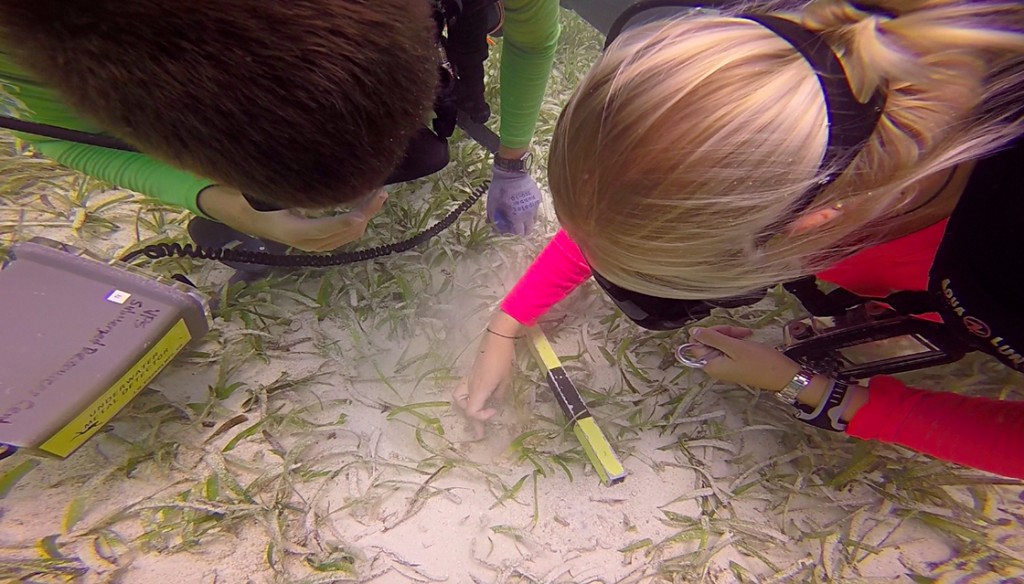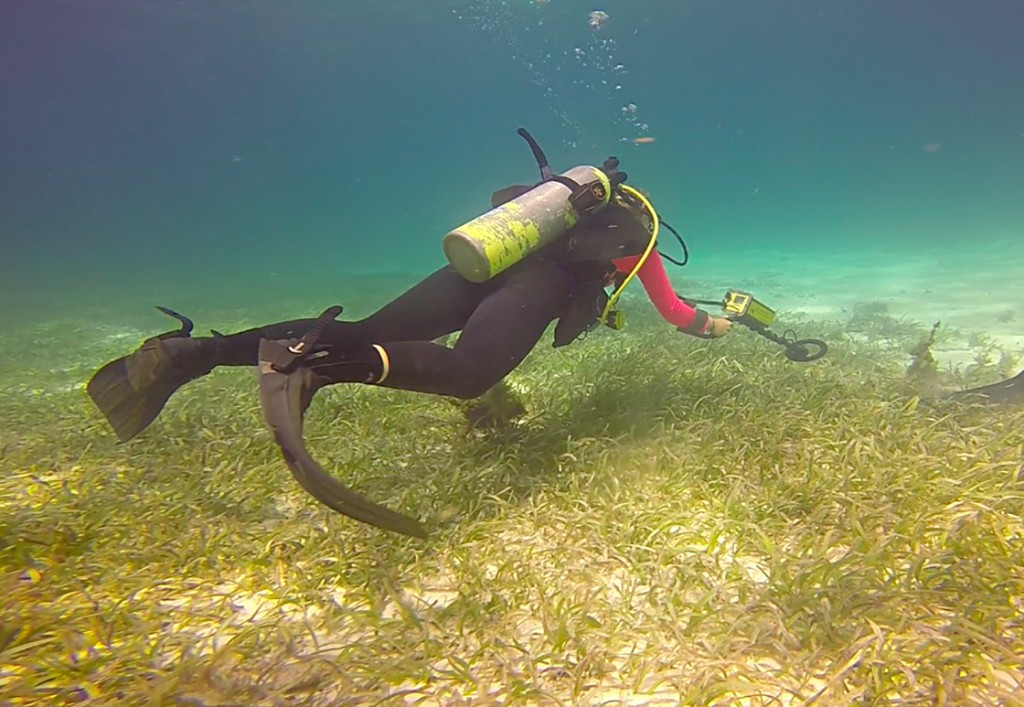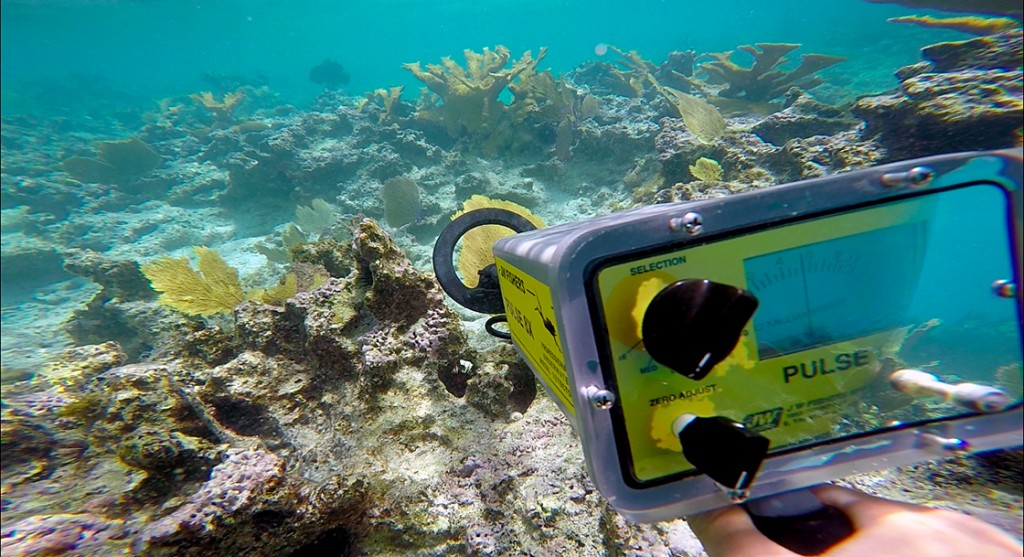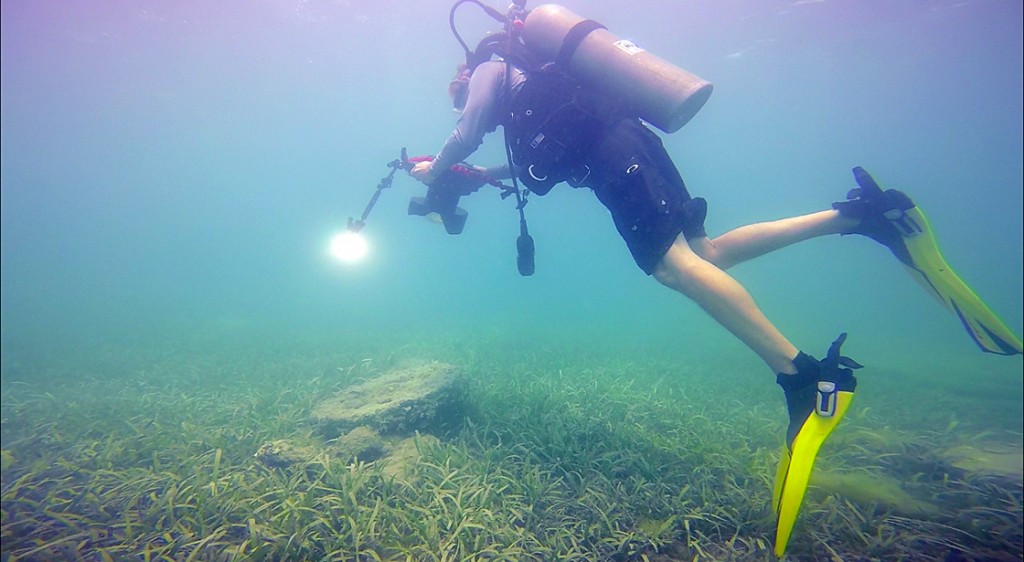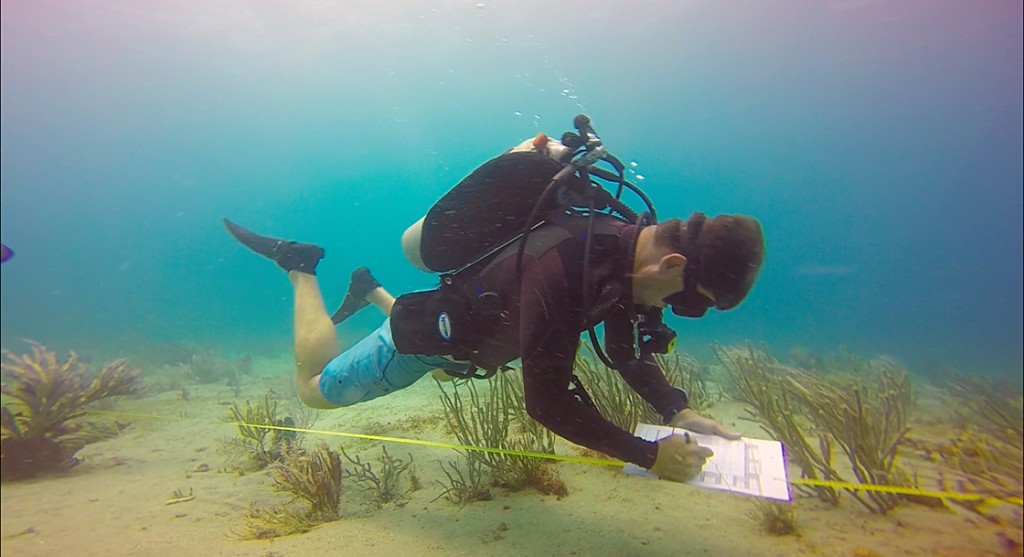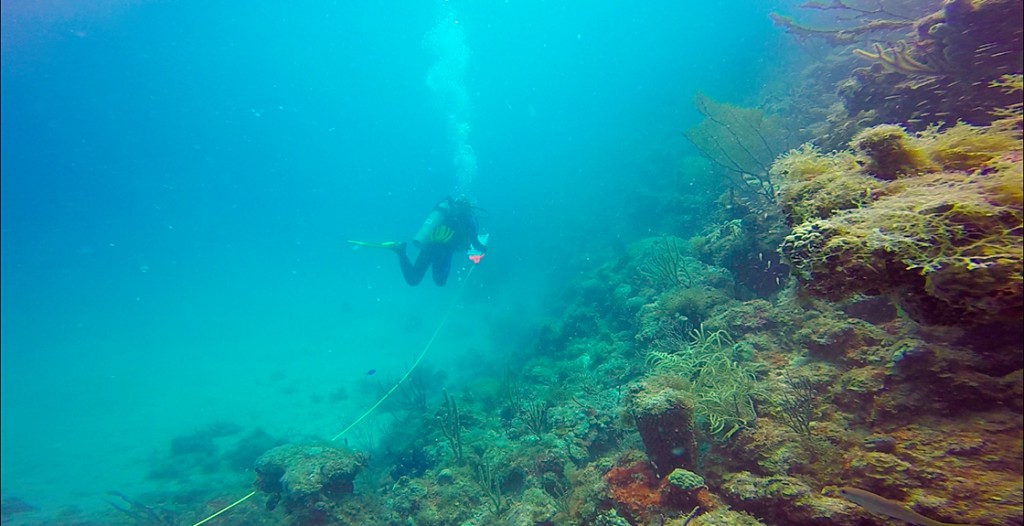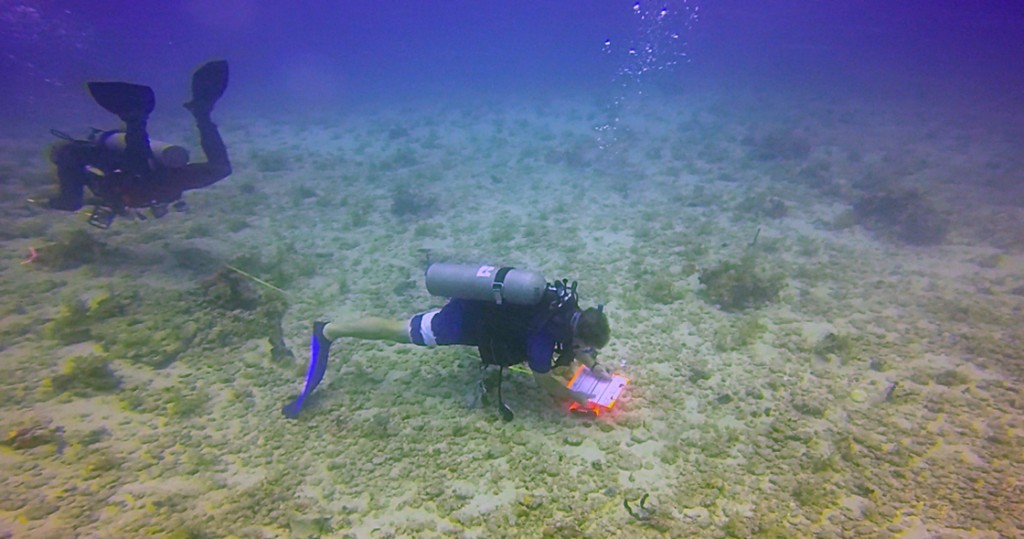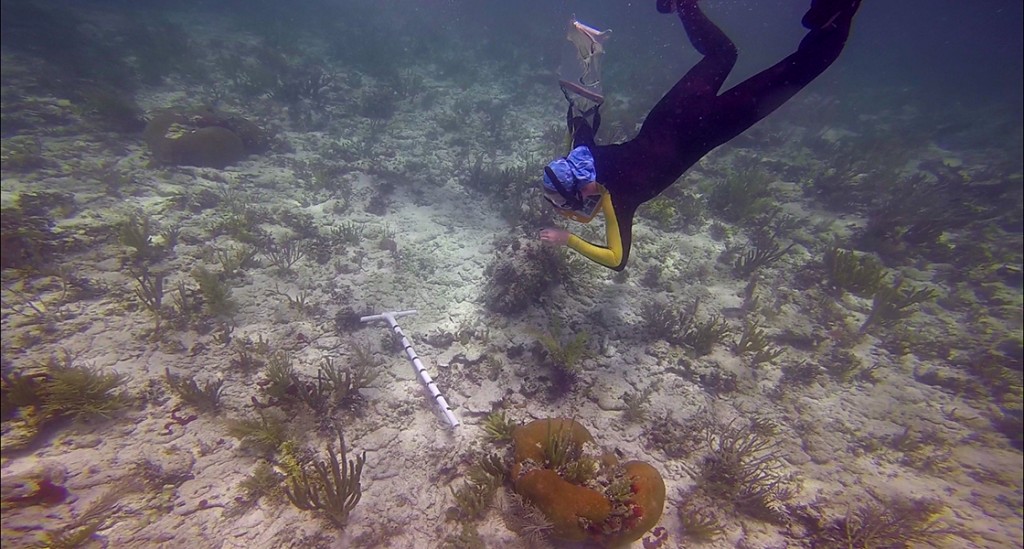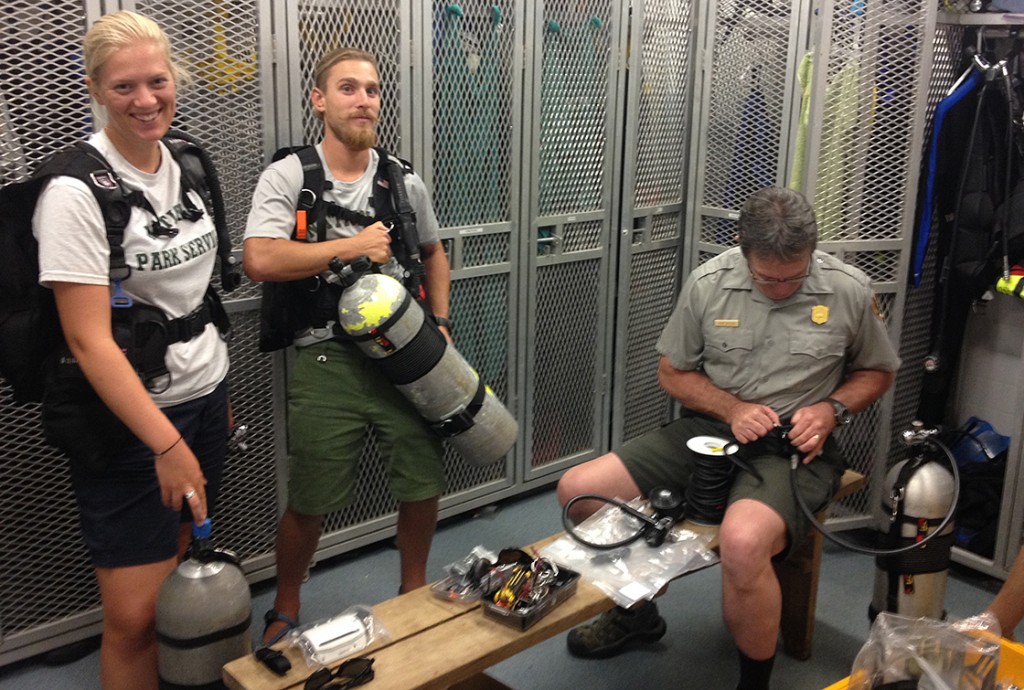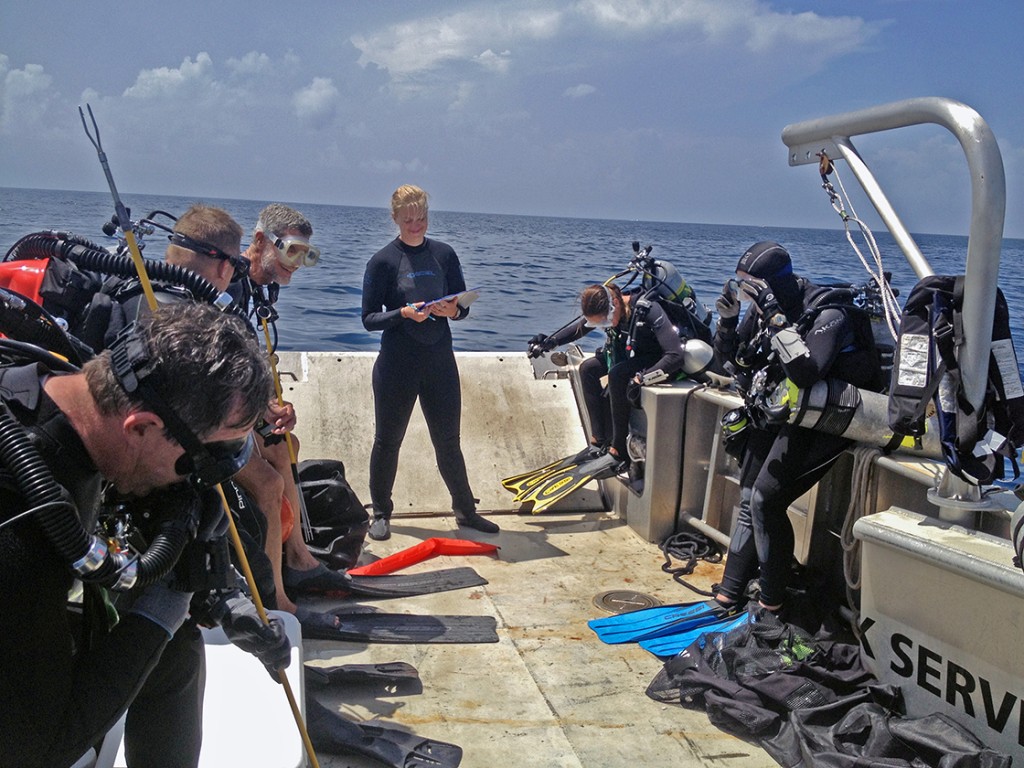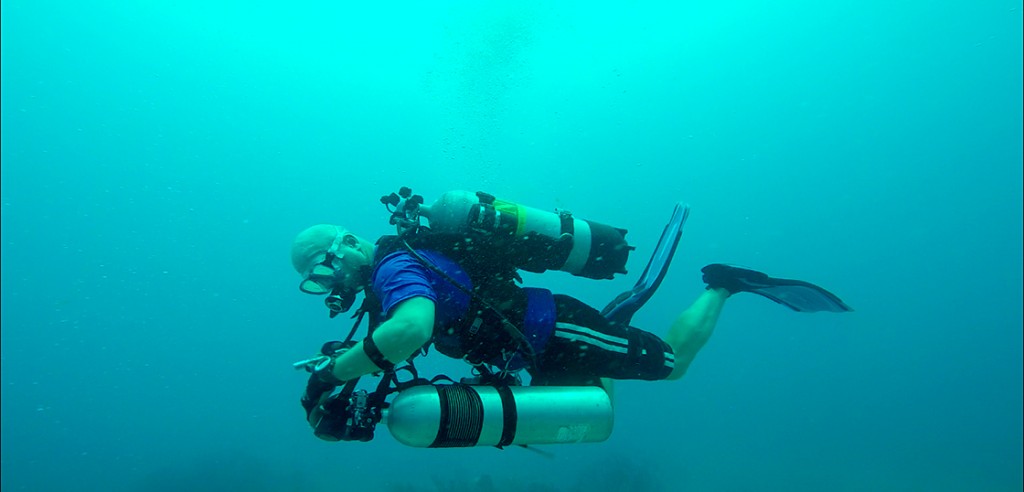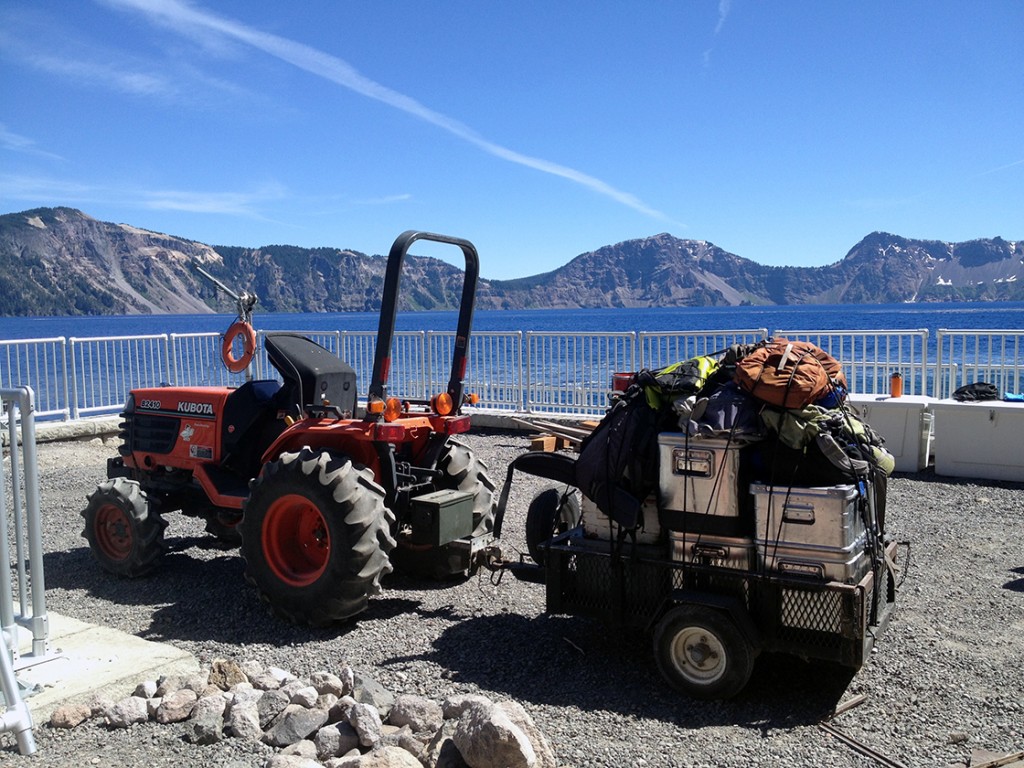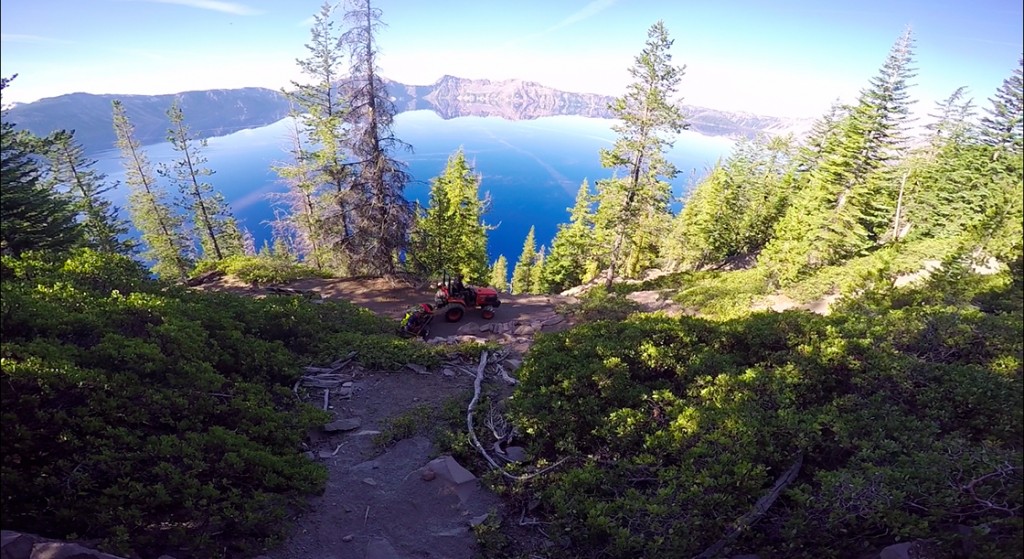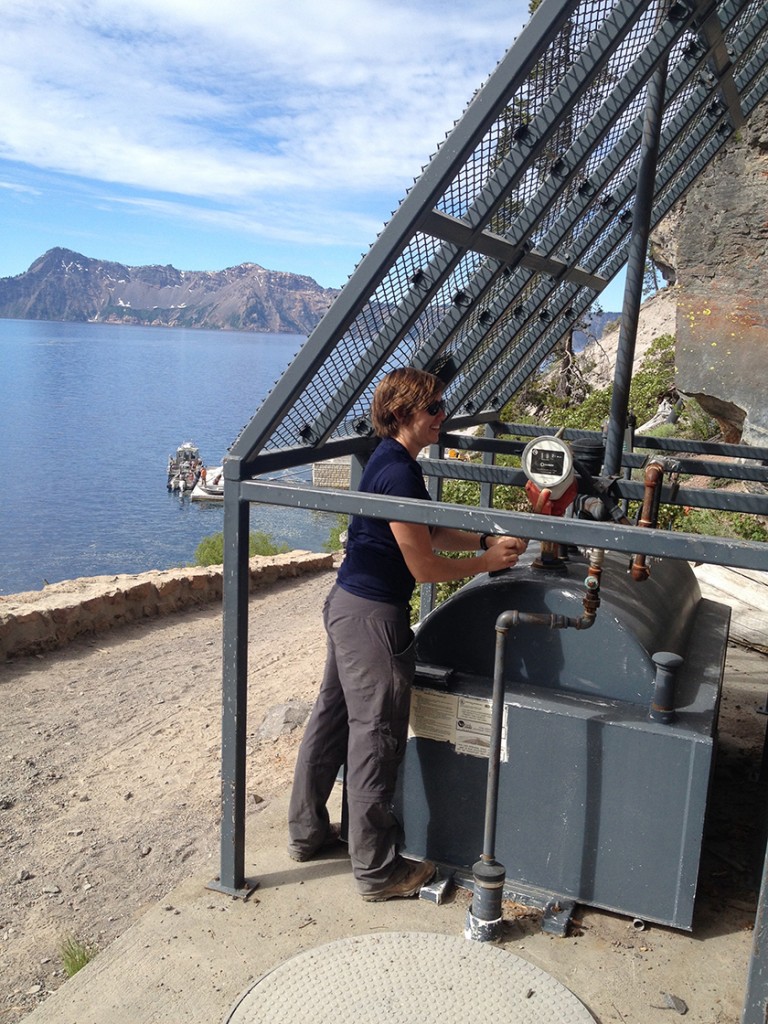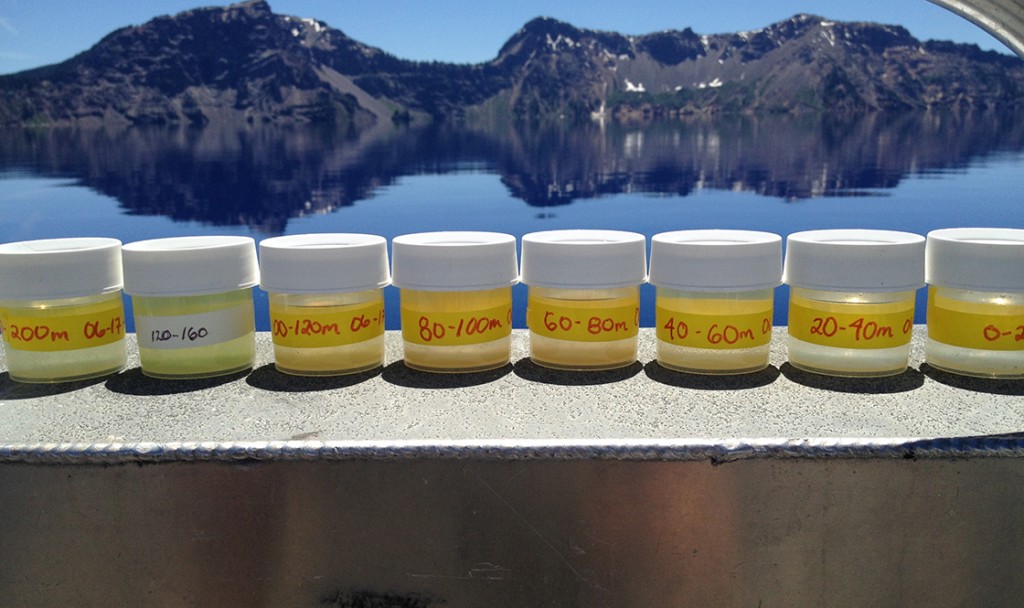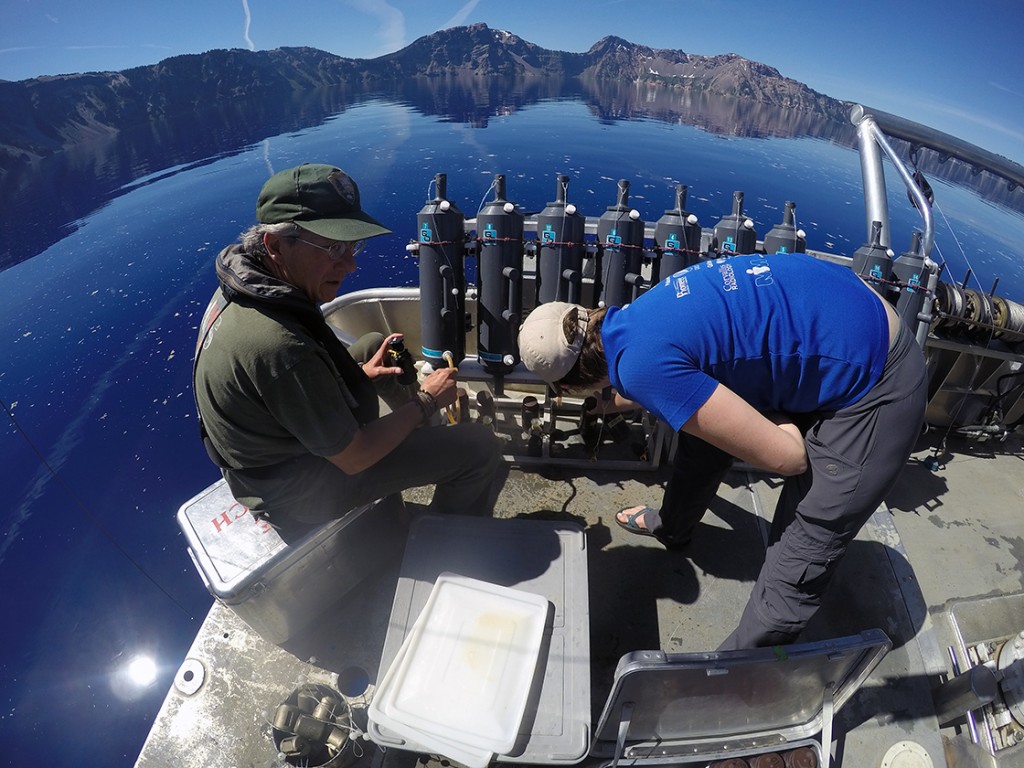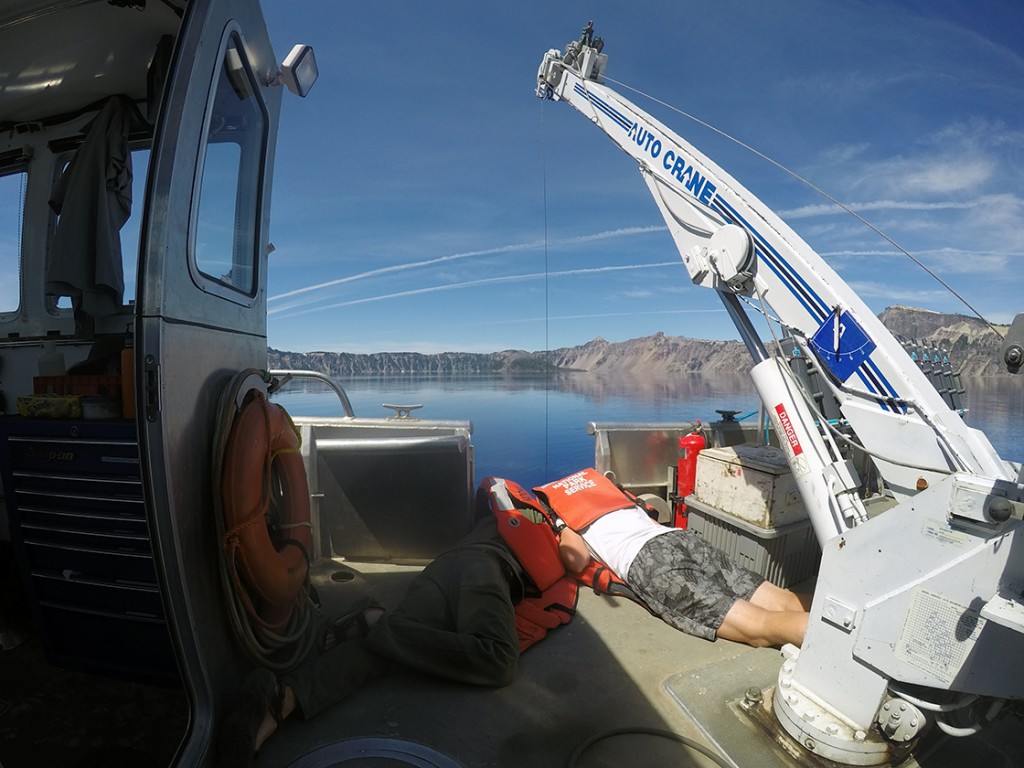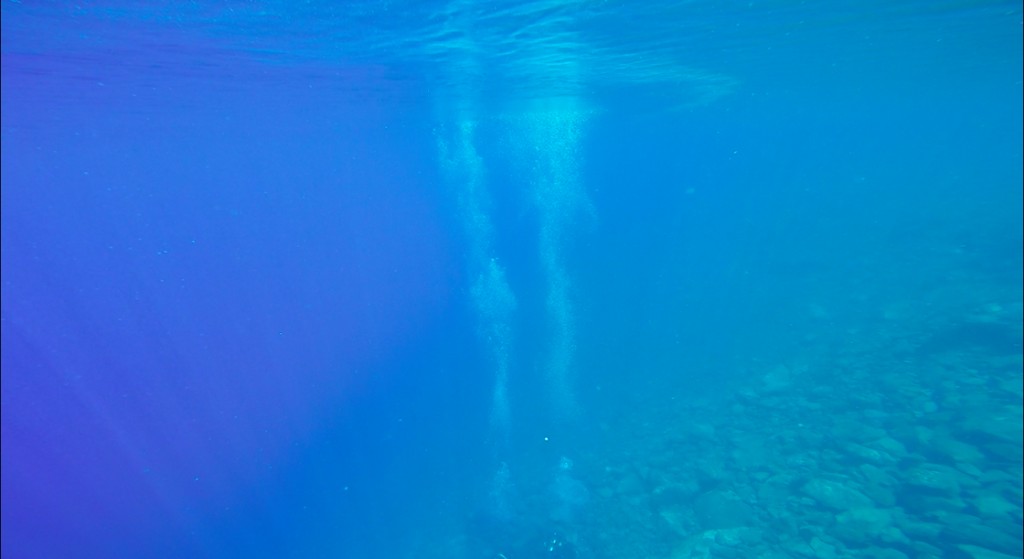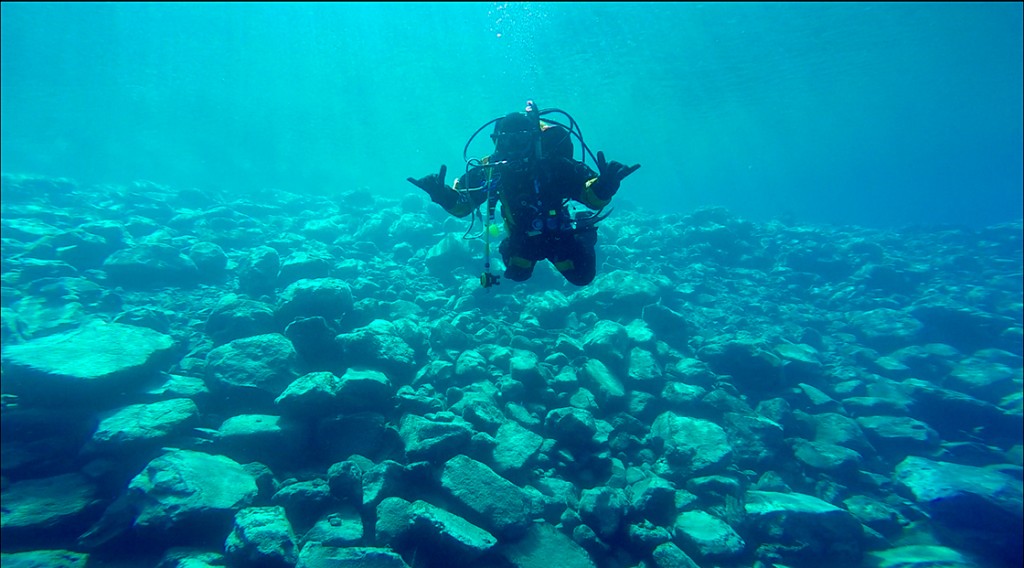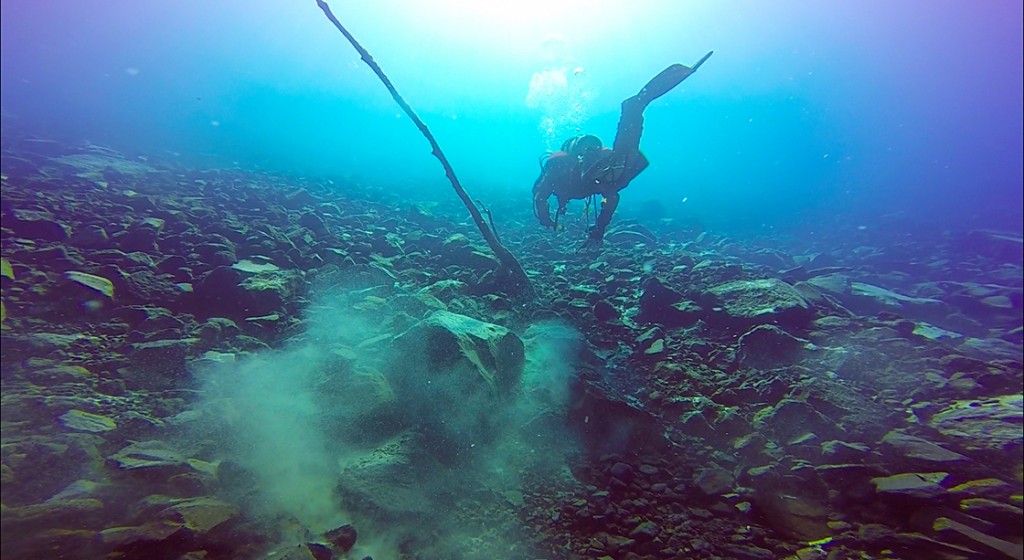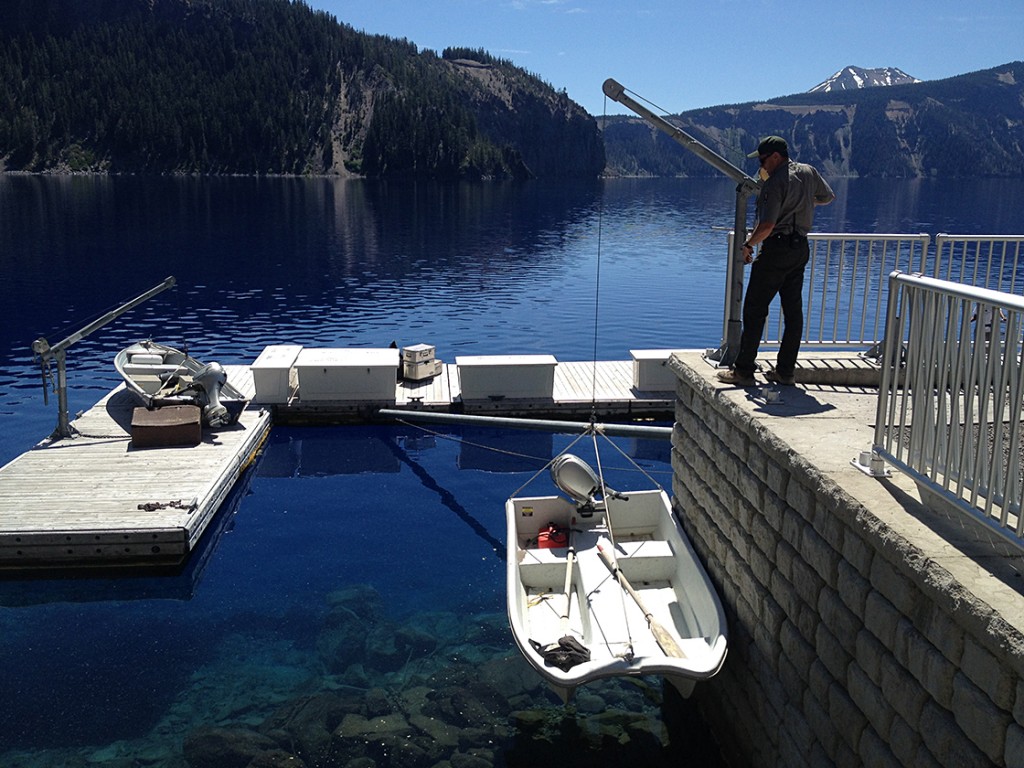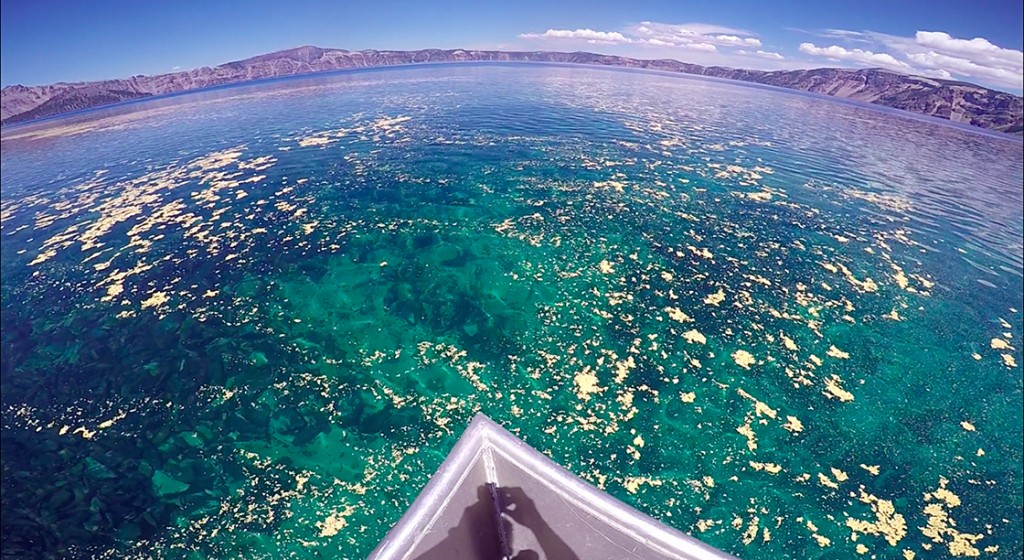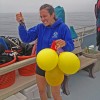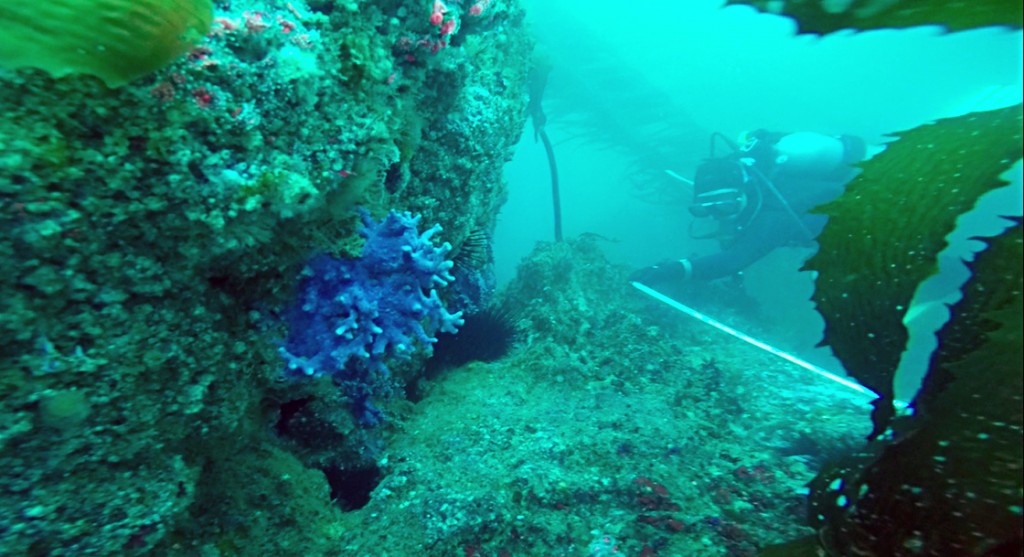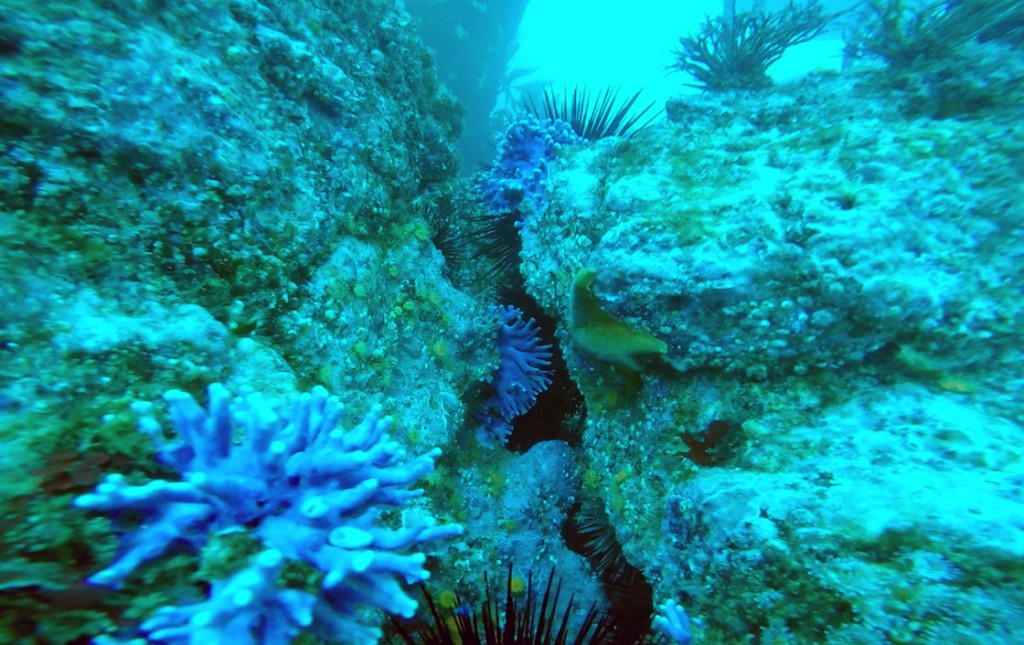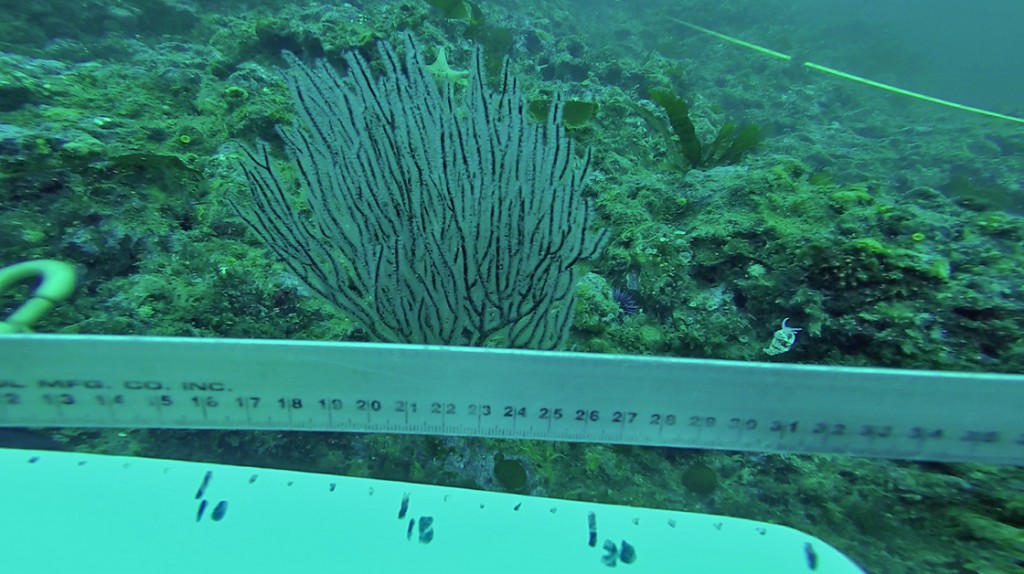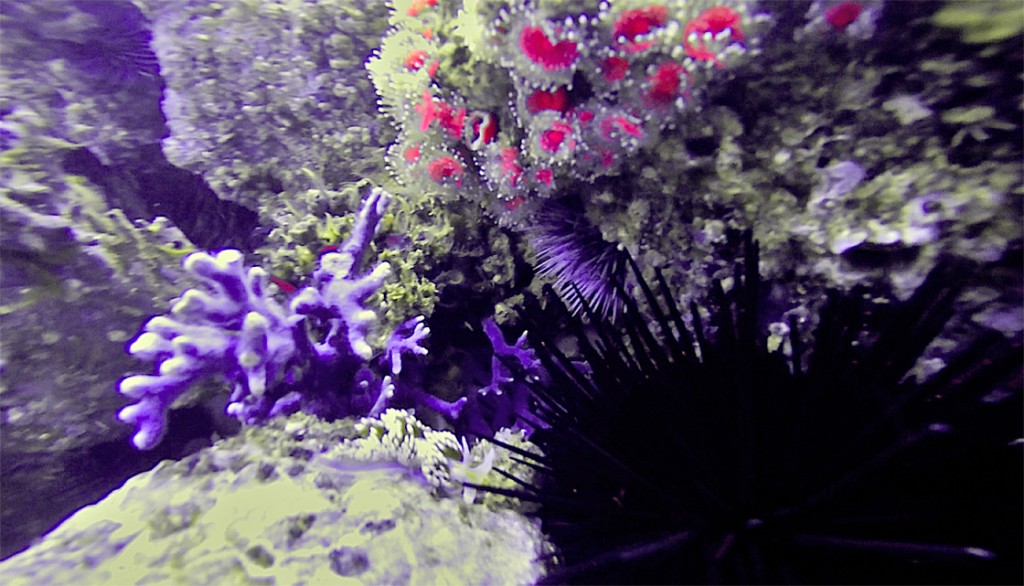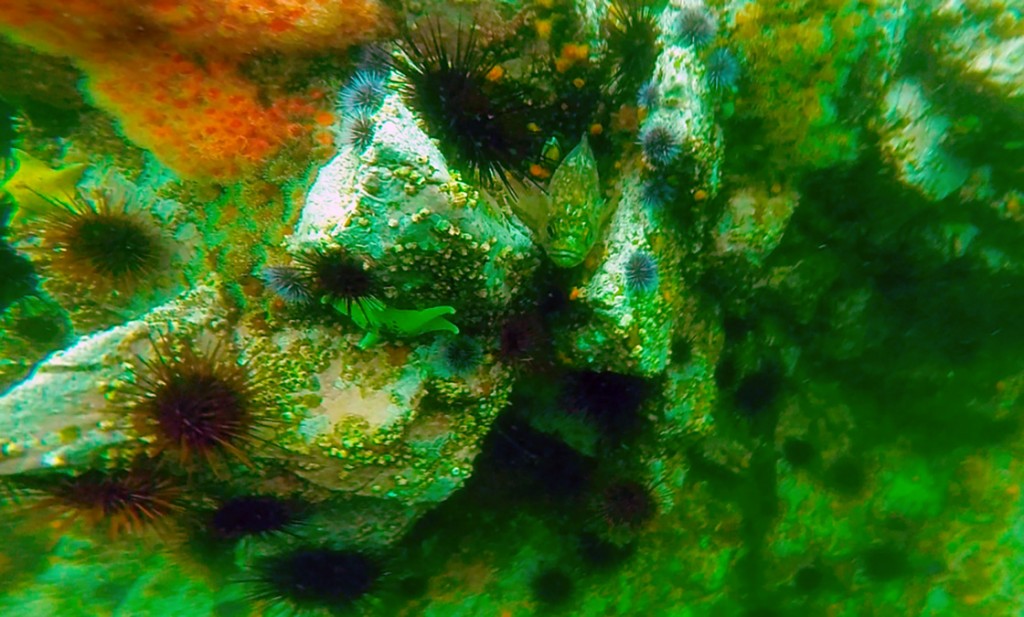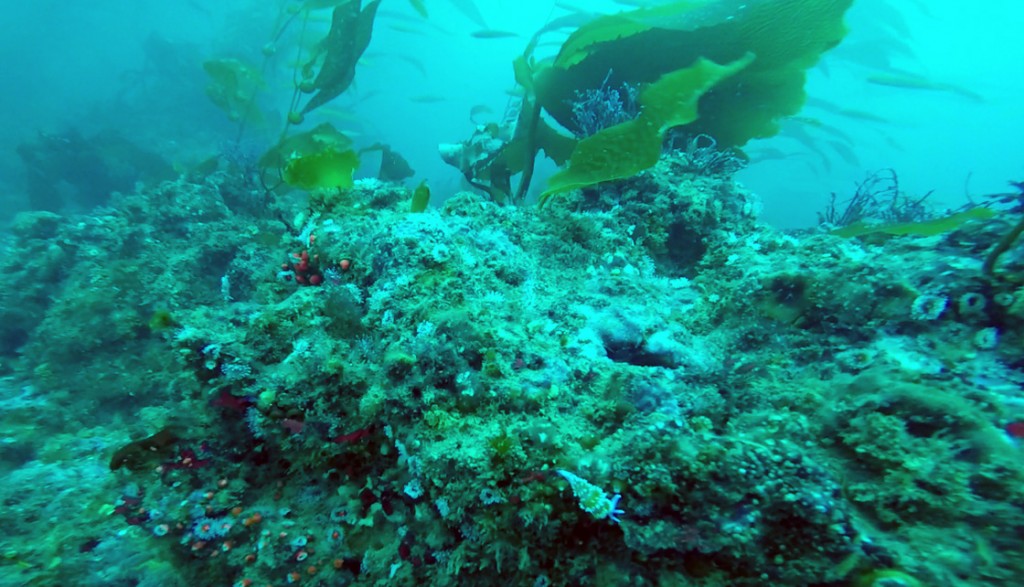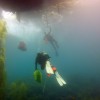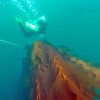 I landed in Denver the night of July 22nd. Susanna Pershern, the SRC’s Audio/Visual Specialist, graciously picked me up after my late flight and offered to put me up for the night. The next morning, Brett, Susanna, and I packed up the Suburban and the trailer with tanks, dive gear, cameras galore, and enough snack food for a cross-country road trip and headed out on our 15-hour drive to Wisconsin.
I landed in Denver the night of July 22nd. Susanna Pershern, the SRC’s Audio/Visual Specialist, graciously picked me up after my late flight and offered to put me up for the night. The next morning, Brett, Susanna, and I packed up the Suburban and the trailer with tanks, dive gear, cameras galore, and enough snack food for a cross-country road trip and headed out on our 15-hour drive to Wisconsin.
We left the majestic Rocky Mountains of Colorado behind as they slowly turned into rolling hills before completely fading away to the flat plains of Nebraska. Since I hadn’t seen either of them in a month, the first few hours were full of conversation as we exchanged stories of our travels over the last few weeks. Somewhere along the freeway in Nebraska, we decided to listen to the book Wake of the Perdido Star by actor Gene Hackman and Dan Lenihan, the founding chief of the SRC. As the sun set, I drifted in and out of sleep to visions of sailing ships, fighting pirates, and a little old town in Massachusetts. We split the trip up by staying a night in Lincoln. But we started the second day of the trip right where we left off with cow pastures out our window and the discovery of treasure on a Caribbean island. The hours passed as the cornfields of Iowa transitioned into the wooded areas and lakes of Wisconsin. By nightfall we had made it to our hotel in Siren, Wisconsin.
The reason Brett, Susanna, and I drove to Wisconsin was to spend a few days working with the kids of Northwest Passage. Northwest Passage offers a variety of services including a comprehensive assessment center as well as intensive residential treatment for children and adolescents struggling with their mental health. Over the past 40 years, Northwest Passage has developed an innovative program that combines both traditional mental health treatments with multiple experiential therapies. One such experiential therapy program is In a New Light, a therapeutic nature photography program aimed at empowering marginalized youth by encouraging artistic expression in tandem with outdoor exploration.
For the past few years, the National Park Service and the SRC have helped fund In a New Light via small grants. However, until this year, no one from the SRC had made it out to visit the Northwest Passage kids. But when Brett first explained to me what it was, I knew I had to jump on the opportunity to see the program for myself, interact with the kids, and experience the transformation. Having grown up with many of my friends struggling with their own mental health issues, I found the goal and mission of Northwest Passage to be remarkable and one that was close to my heart. I fell asleep excited; I looking forward to being a part, however small, of the healing process of these kids.
On our first morning, we met up with Ben Thwaits, director of the program, at the In a New Light gallery. Created with the intention of providing a venue to proudly display the work produced by the kids, the public gallery is impressive to say the least. Inside, breathtaking work from Passage graduates adorned the walls in various collections from different trips they have taken over the years. I was shocked by the quality of work that was hanging on the walls. I found myself wishing I were as good of a photographer so that I could capture moments so perfectly.
Along the back wall hung an exhibition entitled “Under the Surface”. The stunning collection was comprised entirely of shots taken by the kids using underwater cameras in the local rivers and lakes. In fact, over the next two days, we would be joining both the boys’ and girls’ field trips to the local Saint Croix Riverway in order to explore the river and take some underwater pictures with them.
Later that morning, Ben took us to the Gordon dam on the St. Croix River where we met up with the Passage girls, their teachers Kelly and Ian, and Toben Lafrancois, a biologist and co-founder and director of the New Light Under the Surface program. After donning our gear, Ben and Toben gathered everyone around for introductions and a safety orientation. Due to recent heavy rains and flooding along parts of the St. Croix, the water was moving faster than usual over the dam and everyone was asked to be cautious and stick with their buddies.
As soon as Ben was done talking, they darted out into the river in pairs. Armed with only a camera and snorkel gear, the girls spent almost five hours in the water taking pictures of mussels, crawfish, freshwater sponges, snails, and the dam. It was amazing to watch the whole process. Some were constantly moving, flitting between subjects, exploring further downstream then back upstream, trying to take lots of pictures in a variety of habitats. Others girls were very patient and would stay in the same spot for a long time trying to get that perfect shot. They weren’t afraid to ask questions or help each other out by offering advice on how to shoot a certain subject.
 The next day, we took the boys out on the river, about a half-mile downstream, just at the end of some exciting rapids. Initially it seemed as if there weren’t as many typical subjects to photograph, and I was worried that the boys wouldn’t enjoy it as much, but they spent just as long out on the water getting some wonderful shots of fish, grasses, an old dock, and the rapids. The boys even managed to find a plethora of discarded items on the hard bottom including a fishing rod and a tackle box.
The next day, we took the boys out on the river, about a half-mile downstream, just at the end of some exciting rapids. Initially it seemed as if there weren’t as many typical subjects to photograph, and I was worried that the boys wouldn’t enjoy it as much, but they spent just as long out on the water getting some wonderful shots of fish, grasses, an old dock, and the rapids. The boys even managed to find a plethora of discarded items on the hard bottom including a fishing rod and a tackle box.
Being out on the river with the kids was a blast. I loved working with them and watching them splash about and have fun with their friends while exploring the world, satisfying a curiosity, and building meaningful relationships, reminding me what it’s like to be a kid. And that was the beauty of it all. When they were in the water, they forgot about their issues; they were just kids. You couldn’t tell they were troubled at all. They were normal kids who just needed the time, tools, and encouragement to explore their world, develop relationships, and express themselves. And that is what Northwest Passage is doing for these kids.
On Wednesday, we took three of the Passage guys a few hours north, up to Apostle Islands National Lakeshore on the southwestern shore of Lake Superior for the day. Lake Superior is known for its shipwrecks so Ben and Brett were hoping to get the guys snorkeling in a new environment with new subjects, maybe a shipwreck or two, to photograph. We were on our way to a wreck, but the Coast Guard had other plans for us. They had gotten a call for distressed kayakers and they needed all NPS vessels to head to the location to try to get eyes on the kayakers. By the time we got there, another boat had already sighted them and had started guiding them into shore. As we started heading back out for our planned day on the water, the Coast Guard showed up to take control of the situation.
We spent the afternoon snorkeling in a bay next to some photogenic cliffs before heading over to two shipwrecks – the Ottawa and the H.D. Coffinberry. The guys really enjoyed exploring the two shipwrecks, so much so that we had to call them out of the water because it was getting late.
When we got back to dock, I went to grab something out of the car when I overheard the three Passage guys gawking about how awesome the day was and that absolutely made my day. It may not seem like a lot, but to hear three young teenage boys say that to each other without being asked by an adult means that they must’ve had a fantastic time out on the water. Ben told me later on that on the drive home the guys could not stop talking about it and that one of the guys seemed really serious about joining the Coast Guard. It’s amazing to think that the events of one day could change a person’s life course and give them a new goal, a new dream to work toward.
 On our last day in town, Brett, Susanna, and I went out on Lake Superior with Toben and a Passage graduate to do some basic photographing of the park. David Cooper, our boat operator, brought us to the backside of Devil’s Island where wave action over time has carved out sea caves in the rock face on the north side. We all dove in so that we could take pictures of this magnificent natural façade.
On our last day in town, Brett, Susanna, and I went out on Lake Superior with Toben and a Passage graduate to do some basic photographing of the park. David Cooper, our boat operator, brought us to the backside of Devil’s Island where wave action over time has carved out sea caves in the rock face on the north side. We all dove in so that we could take pictures of this magnificent natural façade.
 However, about halfway through the planned dive I realized the waterproof battery cover on my camera had opened. Susanna and I immediately called our dive and headed back to the boat to dry my camera. I remember panicking thinking about how I lost all of my pictures and how Brett was going to kill me, but I did everything I could to dry the camera as quickly as possible, so all that was left to do was wait. Thankfully, the following morning, as we were packing up the car to head back to Denver, I put the battery pack back in after leaving it out all night to dry and the camera was working fine. I definitely learned my lesson to upload my pictures every night!
However, about halfway through the planned dive I realized the waterproof battery cover on my camera had opened. Susanna and I immediately called our dive and headed back to the boat to dry my camera. I remember panicking thinking about how I lost all of my pictures and how Brett was going to kill me, but I did everything I could to dry the camera as quickly as possible, so all that was left to do was wait. Thankfully, the following morning, as we were packing up the car to head back to Denver, I put the battery pack back in after leaving it out all night to dry and the camera was working fine. I definitely learned my lesson to upload my pictures every night!

 Thanks to Brett and Susanna for allowing me to come along on the road trip to Wisconsin and for taking me on my first cold water dive ever! Another thanks to Ben and Toben for doing what you do for the kids at Northwest Passage. You two are impacting the lives of these kids every day and helping them turn their lives around. It is just remarkable. Lastly, a special thanks goes out to the kids of Northwest Passage who impacted me in an indescribable way.
Thanks to Brett and Susanna for allowing me to come along on the road trip to Wisconsin and for taking me on my first cold water dive ever! Another thanks to Ben and Toben for doing what you do for the kids at Northwest Passage. You two are impacting the lives of these kids every day and helping them turn their lives around. It is just remarkable. Lastly, a special thanks goes out to the kids of Northwest Passage who impacted me in an indescribable way.






























